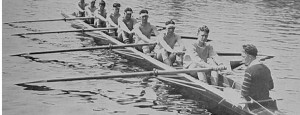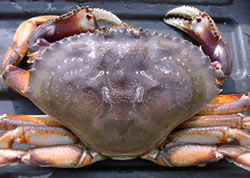http://images.businessweek.com/ss/09/04/0415_how_to_innovate/10.htm
What about the un-TARP funds?
There’s no shortage of people talking about the Troubled Asset Relief Program (TARP) and how much has been given and how much has been spent and whether it makes sense to spend more. So I won’t add to that pile today. Instead, I want to talk about the un-TARP and by that I mean the companies that are doing really well that need some additional cash to really get rolling. In the latest issue of Forbes there is an article about Andrew Beal of Beal Bank called “The Banker Who Said No” and the article says “[Beal] finds it ‘crazy’ that bankers who acted irresponsibly are getting money and he’s not.” So do I.
I didn’t know much about Beal Bank until I read that article, but in a nutshell, Beal saw how nutty the lending industry was and literally reduced his workforce from 2004 to 2007. He didn’t participate in what we now know to be the craziness that led to TARP. Now Beal is growing aggressively and continuing to make sound banking decisions.
So why are TARP funds being given to the financial institutions and automakers that made the worst decisions? Shouldn’t we instead be at least hedging our bets and have a set of funds for the more promising financial services companies and automakers?
Speaking of automakers, take Tesla Motors. They make the best electric car going. It’s not cheap, but they have a cheaper one in the works. Innovative, good looking, fast, all electric. And it’s American. I am not going to suggest we throw all of our eggs in one basket, I am just saying that instead of throwing all of the relief funds at troubled assets, why not throw some money at the not-so-troubled assets as well.
I talk about outcomes all the time, and if the outcome we want is a strong economy with strong companies, it seems only logical that while we spend to help fix the companies that have been making some really bad decisions, we also ought to look at helping those promising companies that haven’t yet made any really big mistakes. I vote for some rethinking in the creation and spending of funds like TARP.
And if you can come up with a better phrase than un-TARP, I would love to hear it.
-Ric
Misadventures in rethinking #1. The office collar
Yesterday I was reading The New York Times and there was a funny article about a web site with pictures of silly things people do to their pets, the site is http://www.petswhowanttokillthemselves.com and there are some odd pictures out there. This Pat Benatar dog is something.
But it got me thinking, just as people do silly things to their pets, there are some pretty unusual ideas people come up with when rethinking their work. The office collar, below, is a good example of a strange idea. Presumably this is intended to act as a cross between a low cost cubicle and horse blinders.
So while most of the posts on this site are on a much more productive and serious note, I thought that the odd misadventure story might be the source of some welcome levity. If you have stories and photos of your own misadventures in rethinking, please send them to me at rethink@microsoft.com
-Ric
Now hiring? Take your time, there are diamonds in the rough in this recession
For those of you who haven’t yet seen the Susan Boyle video, I promise you will be glad you watch it in its entirety here.
I can’t think of a story that unfolded so fast, so well, and the only reason I found out about this one was because there has been so much chatter about it on the internet.
I don’t watch reality TV shows often, but I know who Simon Cowell is, and now that I have watched this video a few times myself, I think that as Susan got through her song, Simon was smiling (which I have never seen before) because he knew they had gotten to someone who would have never gotten her shot had it not been for that show, and that because of the show he created, a 47 year-old woman from a little village in Scotland fulfilled her dream right there on that stage last Saturday night. Her life will never be the same, and Simon knew that before she did.
While you ought to have to have at least some admiration for the typical kids that go on that sort of show for their guts and ambition, the Susan Boyle story really stands out from that crowd as someone so unlikely, and yet, as we now know so deserving of a chance.
Which brings me to what it has to do with rethinking and it has to do with hiring. Right now in this recession, people are getting laid off all over the place, but some people are still hiring. I have hired lots of people over the years, and when I have looked at resumes in the past, I would look for some basics and I often look for “standard” qualifications, quickly dismissing lots and lots of resumes without much thought.
When times are good (which they were for nearly 20 years with the asterisk of the dot com correction), that’s probably a good approach, as really good people are hard to find and you can be very picky that way. Today, however, I expect the climate is already so different, that an unusually high number of really great people are out there, and in many cases they are wanting or needing to change careers (like a lot of bankers and auto workers in the US), so their resumes may not be an obvious fit for some roles.
My bet is that there are lots and lots of Susan Boyles out there right now, so don’t be so quick to dismiss candidates who seem completely unfit for a given role, because when you find them, you will probably have a smile bigger than Simon’s.
-Ric
Companies I love – Concept2
There are what I would call “the usual suspects” of great companies that people talk about often, from Netflix, to YouTube, to Ebay, and so on, but most of us also have our own favorite companies that are less well known. This is the first of what I expect to be a series of posts about companies that not everyone knows about, but which I think most people can learn a few things. Today I am going to write about Concept2 (makers of rowing oars and rowing machines) which is one of my all-time favorites.
 I have been rowing competitively, off and on, for more than 25 years, and when I started, it was wooden boats and wooden oars, and the coxswain, the person who sits in the stern calling out specific instructions (not “stroke! stroke! stroke!” as is commonly believed) and steering used to yell into a miniature old-fashioned megaphone with a headband that looked more like orthadonture than anything sports related, and the practice machine, the rowing ergometer, was a huge metal contraption that bordered on torture (in fairness some rowers might still view the ergometer as torture, but it’s more precise, scientific torture that more closely resembles rowing).
I have been rowing competitively, off and on, for more than 25 years, and when I started, it was wooden boats and wooden oars, and the coxswain, the person who sits in the stern calling out specific instructions (not “stroke! stroke! stroke!” as is commonly believed) and steering used to yell into a miniature old-fashioned megaphone with a headband that looked more like orthadonture than anything sports related, and the practice machine, the rowing ergometer, was a huge metal contraption that bordered on torture (in fairness some rowers might still view the ergometer as torture, but it’s more precise, scientific torture that more closely resembles rowing).
 Today, while the coxswains are still small, and the workouts no less grueling, little about the equipment is the same. The oars and boats are mostly fiberglass, the coxswains now have an electronic device (the “cox box”) that is connected to speakers in the boat (so less yelling, typically) and there is an automated stroke rate counter, and the rowing ergometers are now lightweight, relatively portable with sophisticated computers.
Today, while the coxswains are still small, and the workouts no less grueling, little about the equipment is the same. The oars and boats are mostly fiberglass, the coxswains now have an electronic device (the “cox box”) that is connected to speakers in the boat (so less yelling, typically) and there is an automated stroke rate counter, and the rowing ergometers are now lightweight, relatively portable with sophisticated computers.
Concept2 isn’t responsible for all of the changes in the rowing world, but they are responsible for some of the biggest innovations in the oars and the rowing ergometers. Moving the boat through the water is “what” rowing is about, and “how” it is done through training on the machines, and pulling the oar through the water are made better and easier by Concept2. So they have really great products, which is the first key to being in touch with customers. In the case of the oars, the rowing oar went through some minor changes over time, but as you can see, for over 100 years an oar still looked pretty much like an oar, only shorter. The people at Concept2, after figuring out fiberglass was a better material, also figured out that changing the shape of the blade (the part that goes into the water) to resemble a hatchet or cleaver, was a better oar. And while the first rowing machine they made (which was basically a bike wheel with black plastic flippers for wind resistance) was an improvement, today they are amazing. But Concept2 does so many other things that makes it easy to love them. They do all kinds of things for the rowing community. They have online ergometer records (times for specific distances, by age group) free rowing logs and to go with those, they frequently have competitions that you can participate in as an individual or as a team. For example, every year they have a Holiday Challenge to row 200,000 meters between Thanksgiving and Christmas (which is a GREAT way to fight holiday weight gain), and when you do it, you get a prize, and there are different tiers for different age groups and abilities. They also have million meter clubs where for every million meters you log on the ergometer, they give you a certificate and some sort of prize like free socks. All of the online logging is on the honor system and it think it’s partly the nature of the rowing community, but the honor system works. The other piece is that while some rowing clubs are well funded, most are not, and so I love how much Concept2 has done to keep their costs down to help keep their oars and ergometers as affordable as they have.
But Concept2 does so many other things that makes it easy to love them. They do all kinds of things for the rowing community. They have online ergometer records (times for specific distances, by age group) free rowing logs and to go with those, they frequently have competitions that you can participate in as an individual or as a team. For example, every year they have a Holiday Challenge to row 200,000 meters between Thanksgiving and Christmas (which is a GREAT way to fight holiday weight gain), and when you do it, you get a prize, and there are different tiers for different age groups and abilities. They also have million meter clubs where for every million meters you log on the ergometer, they give you a certificate and some sort of prize like free socks. All of the online logging is on the honor system and it think it’s partly the nature of the rowing community, but the honor system works. The other piece is that while some rowing clubs are well funded, most are not, and so I love how much Concept2 has done to keep their costs down to help keep their oars and ergometers as affordable as they have.
Finally, another test of a company I love, they continue to innovate and remain in touch with what their customers want as technology becomes more ubiquitous. For example, their rowing ergometers now have a card (like a credit card with a computer chip) that allows you to keep track of your progress, and when you travel, if you take your card with you, most gyms around the world have a Concept2 ergometer, you can just slide your card in and it will continue to keep track of all of your information (which of course you can also download to your computer) from stroke rate, to distance, to times, etc.
So to summarize, Concept2 is very much in touch with what their customer values and their continue to deliver better and better products to meet those needs, and they continue to make efforts to innovate, and build community, and help their customers afford their products so that everyone on, and off, the water can compete (or not) based on their abilities and interest. What’s not to love about Concept2?
-Ric
Metrics are often the wrong place to start
Don’t be fooled by the logos in this post, I think you will find it relevant.
Lots of projects start with metrics and deep quantitative analysis, and people who have worked with me in recent years know how much I love to get quantitative, but I always start by making sure everyone is clear and specific about the outcome people want, and then ask what will cause that outcome. It sounds pretty basic, but I see the mistake made almost every day.
Twenty years ago I was a paralegal in the corporate division of one of Seattle’s biggest law firms, working for an attorney named Steve. Steve told me that one of his big clients needed to start operating a new business and that would require a 50-state filing, a pretty self-explanatory effort that would license them to do work across the US. So I went out and did the research for the cost to file in each state and came back with the price tag, by state. One of the states was very expensive, and Steve pointed to that state and asked “what’s the enforcement provision?” which is a question that has since echoed in my head many times since that day. Steve’s point was a simple one; yes it’s legally required to be licensed in that state, but if there is no specific penalty for not having the license (the enforcement provision), why would we bother to pay the fee and get the license?
NOAA recently got a new leader, Jane Lubchenco, and one of the issues Dr. Lubchenco will have to address is the severely threatened salmon populations in the Pacific Northwest. Already the debate has started about what was done during the Clinton administration and the Bush administration, and what the right measure of success is for this problem. That’s the wrong question to start with and in my opinion if NOAA and Dr. Lubchenco stay on that path, she will find herself in a one-legged kicking contest. That’s because she doesn’t control enforcement, and enforcement is what will cause the desired behavior, and that is what will get the outcome we need.
 Enforcement on this issue starts at the Washington Department of Fish & Wildlife. Having been born and reared in the Pacific Northwest, I grew up reading the annual rules and regulations for a variety of activities managed by WDFW.
Enforcement on this issue starts at the Washington Department of Fish & Wildlife. Having been born and reared in the Pacific Northwest, I grew up reading the annual rules and regulations for a variety of activities managed by WDFW.  My Dad and I have always had all of the necessary licenses, stamps, punchcards, parking stickers, and so on (and yes, the list does go on) needed to legally participate in these activities. But one of the things that troubles me, particularly as salmon, steelhead, and crab populations get more pressure and lose habitat, is that I haven’t seen a game warden anywhere for over 20 years. I see people poaching crab and fishing where they aren’t supposed to (both sport and commercial people), and they often say they didn’t even know a license was needed (that’s just sport fishers). I think it’s not so different from running a stop sign – people see others get away with it, and then they get away with it, why would you ever stop at a stop sign again if it’s never enforced or unless you see a car coming? It seems a lot of people think like my old boss Steve.
My Dad and I have always had all of the necessary licenses, stamps, punchcards, parking stickers, and so on (and yes, the list does go on) needed to legally participate in these activities. But one of the things that troubles me, particularly as salmon, steelhead, and crab populations get more pressure and lose habitat, is that I haven’t seen a game warden anywhere for over 20 years. I see people poaching crab and fishing where they aren’t supposed to (both sport and commercial people), and they often say they didn’t even know a license was needed (that’s just sport fishers). I think it’s not so different from running a stop sign – people see others get away with it, and then they get away with it, why would you ever stop at a stop sign again if it’s never enforced or unless you see a car coming? It seems a lot of people think like my old boss Steve.
No one wants NOAA to be more successful than I do, but until there is better enforcement in the Pacific Northwest, there’s no way Dr. Lubchenco will succeed by any measure because NOAA alone doesn’t control the outcome of the situation. I think there are some pretty simple ways to get more people to buy licenses, which will provide better funding to WDFW, which will allow better enforcement, and then we will be on the right path.
-Ric



